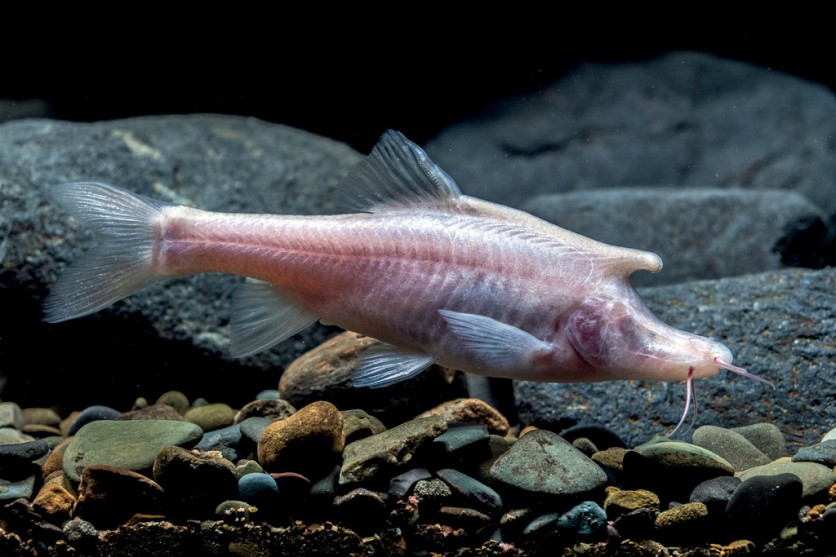The pitch-black recesses of a cave in southern China have yielded an astonishing find - a unicorn-like fish species previously unknown to science.
As IFLScience reports, researchers stumbled upon this mythical-looking creature during a cavefish diversity survey in the region.
To the amazement of the scientific community, this new species belongs to the Sinocyclocheilus genus and boasts an extraordinary horn-like structure on its head.

Strange Fish Discovered in China
Of the 32 specimens collected from the cave, 15 were identified as a completely new species, scientifically designated as Sinocyclocheilus longicornus sp. nov.
The name is derived from the Latin words "longus," meaning long, and "cornu," meaning horn.
This recent discovery elevates the number of species within the Sinocyclocheilus genus to 77, with 13 of them inhabiting the same Guizhou province, China, as the newly found species.
The Sinocyclocheilus longicornus sp. nov. presents an unusual appearance with its horn-like structure on the forehead and degenerated, tiny eyes.
These small eyes are practically non-functional because they live in perpetual darkness. Interestingly, other species within the same genus that lack this horn-like feature tend to inhabit more well-lit aquatic environments.
This leads researchers to hypothesize that the horn may be an adaptation for the new species' dark, subterranean lifestyle.
A Closer Look
"The golden-line fish genus Sinocyclocheilus is endemic to China and is mainly distributed in the karst areas of Southwest China, including Guangxi, Guizhou, Yunnan, and Hubei provinces," says Dr. Jiang Zhou of Guizhou Normal University.
"The narrow distribution, morphological similarities, and morphological adaptations to cave environments, such as the degeneration or loss of eyes and body scales, have made classification of the genus difficult and often controversial," Dr. Jiang Zhou explains.
The Sinocyclocheilus longicornus sp. nov. measures between 10.5 to 14.6 centimeters (4.1 to 5.7 inches) in length and boasts ghostly, whitish scales due to a lack of pigmentation. The cave in which it was discovered is relatively small, with a pool measuring only 1.8 meters wide (5.9 feet) and less than a meter deep (2.6 feet).
What makes this discovery even more intriguing is that the Sinocyclocheilus longicornus sp. nov. is not closely related to other long-horned species within the same genus.
"Based on the present study and previous phylogenetic trees, we hypothesize that the evolution of the forehead horn may have occurred in at least two independent formations, one weakening event and one loss event," states the study's authors.
Scientists are now eager to compare the environmental conditions of this cave with those of other species to unravel the mystery behind the horn's purpose.
This groundbreaking research was published in the scientific journal ZooKeys, providing an in-depth look at this remarkable discovery.
Stay posted here at Tech Times.
Related Article : Climate-Stricken Fishes Find Relief in Innovative' Air Conditioning' Patch Developed by Scientists

ⓒ 2025 TECHTIMES.com All rights reserved. Do not reproduce without permission.




